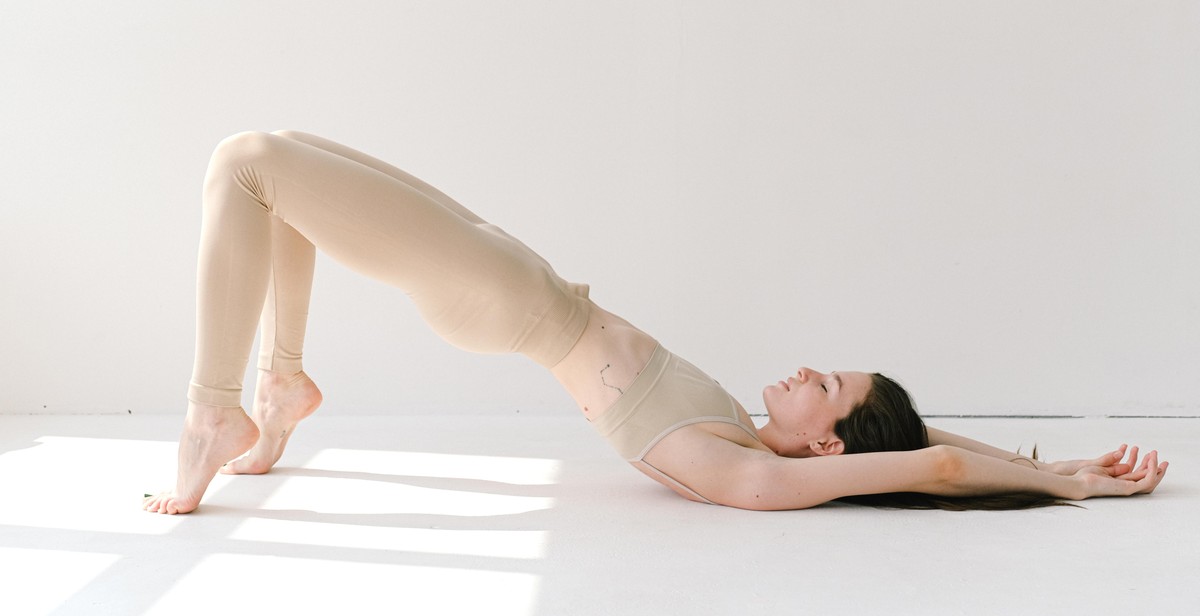How to Incorporate Mindfulness into Your Daily Routine for Better Mental Health
Mindfulness is the practice of being present and fully engaged in the current moment, without judgment or distraction. It is a state of mind that allows you to be aware of your thoughts, feelings, and surroundings, and to accept them without trying to change them or react to them.
Research has shown that incorporating mindfulness into your daily routine can have significant benefits for your mental health. It can reduce stress, anxiety, and depression, and improve overall well-being and quality of life.
What is mindfulness?
Mindfulness is a form of meditation that involves paying attention to your thoughts and feelings without judgment. It is about being fully present in the moment, without dwelling on the past or worrying about the future.
Mindfulness can be practiced in many different ways, such as through meditation, yoga, or simply by focusing on your breath or the sensations in your body. It is a skill that can be developed over time, and with regular practice, can become a natural part of your daily routine.
Why is mindfulness important for mental health?
Mindfulness has been shown to have a wide range of benefits for mental health. It can help to reduce symptoms of anxiety and depression, improve mood, and increase feelings of well-being and happiness. It can also help to improve concentration and focus, and reduce stress and reactivity to negative emotions.
By incorporating mindfulness into your daily routine, you can improve your mental health and overall quality of life. In the following sections, we will explore some simple ways to incorporate mindfulness into your daily routine.

Benefits of Mindfulness
Mindfulness is a practice that has been gaining popularity in recent years. It involves paying attention to the present moment, without judgment or distraction. Incorporating mindfulness into your daily routine can have numerous benefits for your mental health. Here are some of the key benefits:
Reduced Stress and Anxiety
One of the primary benefits of mindfulness is its ability to reduce stress and anxiety. Mindfulness practice has been shown to decrease cortisol levels, which is the hormone associated with stress. When you practice mindfulness, you learn to focus on the present moment and let go of worries about the future or regrets about the past. This can help you feel more relaxed and less anxious.
Improved Focus and Concentration
Mindfulness can also improve your focus and concentration. When you practice mindfulness, you train your brain to focus on one thing at a time. This can help you stay focused on tasks and avoid distractions. Studies have shown that mindfulness practice can improve working memory and cognitive flexibility, which are important for learning and problem-solving.
Enhanced Emotional Regulation
Mindfulness can also help you regulate your emotions more effectively. When you practice mindfulness, you learn to observe your thoughts and feelings without judgment. This can help you become more aware of your emotions and better able to manage them. Studies have shown that mindfulness practice can reduce symptoms of depression and improve overall emotional well-being.
Overall, incorporating mindfulness into your daily routine can have numerous benefits for your mental health. By reducing stress and anxiety, improving focus and concentration, and enhancing emotional regulation, mindfulness can help you lead a happier, healthier life.

How to Incorporate Mindfulness into Your Daily Routine for Better Mental Health
Mindfulness is the practice of being present and fully engaged in the current moment, without judgment. Incorporating mindfulness into your daily routine can have numerous benefits for your mental health, including reduced stress and anxiety, improved focus and productivity, and increased feelings of calm and well-being. Here are some tips for incorporating mindfulness into your daily routine:
Start your day with mindfulness
Begin your day with a few minutes of mindfulness meditation. Find a quiet space where you can sit comfortably and focus on your breath. Close your eyes and take a few deep breaths, then allow your breath to settle into its natural rhythm. As you inhale, focus on the sensation of the breath entering your body. As you exhale, focus on the sensation of the breath leaving your body. If your mind begins to wander, gently bring your focus back to your breath. Start with just a few minutes and gradually increase the time as you become more comfortable with the practice.
Practice mindfulness during routine activities
You don’t have to set aside special time for mindfulness practice – you can incorporate it into your daily activities. For example, when you’re brushing your teeth, focus on the sensation of the bristles against your teeth and gums. When you’re washing dishes, focus on the sensation of the warm water and soap on your hands. When you’re walking, pay attention to the sensation of your feet touching the ground. By bringing your attention to the present moment, you can turn routine activities into opportunities for mindfulness practice.
Take mindfulness breaks throughout the day
Throughout the day, take a few minutes to pause and focus on your breath. Set a timer on your phone or computer to remind you to take a mindfulness break every hour or so. Find a quiet space where you can sit comfortably and focus on your breath. Close your eyes and take a few deep breaths, then allow your breath to settle into its natural rhythm. As you inhale, focus on the sensation of the breath entering your body. As you exhale, focus on the sensation of the breath leaving your body. If your mind begins to wander, gently bring your focus back to your breath. Taking regular mindfulness breaks can help reduce stress and increase feelings of calm and well-being throughout the day.

Mindfulness practices to try:
Here are some mindfulness exercises that you can try to incorporate into your daily routine:
Breathing exercises:
Breathing exercises can help you calm your mind and reduce stress. You can try the following breathing exercise:
- Sit comfortably with your back straight and your eyes closed.
- Take a deep breath in through your nose, counting to four.
- Hold your breath for a count of four.
- Exhale slowly through your mouth for a count of four.
- Repeat this cycle of breathing for several minutes.
Body scan meditation:
Body scan meditation is a technique that helps you focus on your body and release tension. You can try the following body scan meditation:
- Lie down on your back with your arms at your sides and your eyes closed.
- Focus on your toes and imagine them relaxing.
- Move up to your feet, ankles, calves, knees, thighs, hips, and so on, until you reach the top of your head.
- As you focus on each body part, imagine it relaxing and releasing any tension.
- Stay in this relaxed state for several minutes.
Mindful eating:
Mindful eating is a technique that helps you pay attention to your food and enjoy it more fully. You can try the following mindful eating exercise:
| Step | Description |
|---|---|
| 1 | Choose a food that you enjoy. |
| 2 | Take a small bite and chew slowly, focusing on the taste and texture of the food. |
| 3 | Put down your utensil between bites and take a few deep breaths. |
| 4 | Continue eating in this way, paying attention to each bite. |

Incorporating mindfulness into your daily routine: Tips and tricks
Mindfulness is an excellent way to improve your mental health and overall well-being. However, it can be challenging to incorporate mindfulness into your daily routine. Here are some tips and tricks to help you get started:
1. Set reminders
One of the best ways to incorporate mindfulness into your daily routine is to set reminders. You can set reminders on your phone or computer to take a few minutes to practice mindfulness. It can be as simple as taking a deep breath or focusing on your senses. Setting reminders can help you make mindfulness a habit and part of your daily routine.
2. Practice self-compassion
It’s essential to practice self-compassion when incorporating mindfulness into your daily routine. Remember that mindfulness is a skill, and like any other skill, it takes time and practice to develop. Be kind to yourself and don’t get discouraged if you find it challenging at first. Keep practicing, and you’ll get better over time.
3. Be patient and persistent
When incorporating mindfulness into your daily routine, it’s essential to be patient and persistent. It takes time to develop a habit, and mindfulness is no exception. Don’t expect to see immediate results, but keep practicing, and you’ll start to notice the benefits over time. Remember that consistency is key.
- Set reminders to practice mindfulness
- Practice self-compassion when incorporating mindfulness into your daily routine
- Be patient and persistent, and don’t expect immediate results

Conclusion
Mindfulness is a powerful tool that can help you improve your mental health and overall well-being. By incorporating mindfulness into your daily routine, you can reduce stress, improve your mood, and increase your focus and productivity.
There are many different ways to practice mindfulness, so it’s important to find what works best for you. Whether it’s meditation, yoga, or simply taking a few deep breaths throughout the day, the key is to be consistent and make mindfulness a habit.
Remember that mindfulness is not a quick fix or a one-time solution. It’s a lifelong practice that requires patience, dedication, and a willingness to be present in the moment. As you continue to incorporate mindfulness into your daily routine, you’ll likely notice a positive shift in your mental health and overall well-being.
If you’re new to mindfulness, don’t be afraid to seek out resources and support. There are many apps, books, and classes available to help you learn more about mindfulness and develop a regular practice.
With a little effort and commitment, you can incorporate mindfulness into your daily routine and enjoy the many benefits it has to offer. So take a deep breath, be present in the moment, and start your mindfulness journey today.
